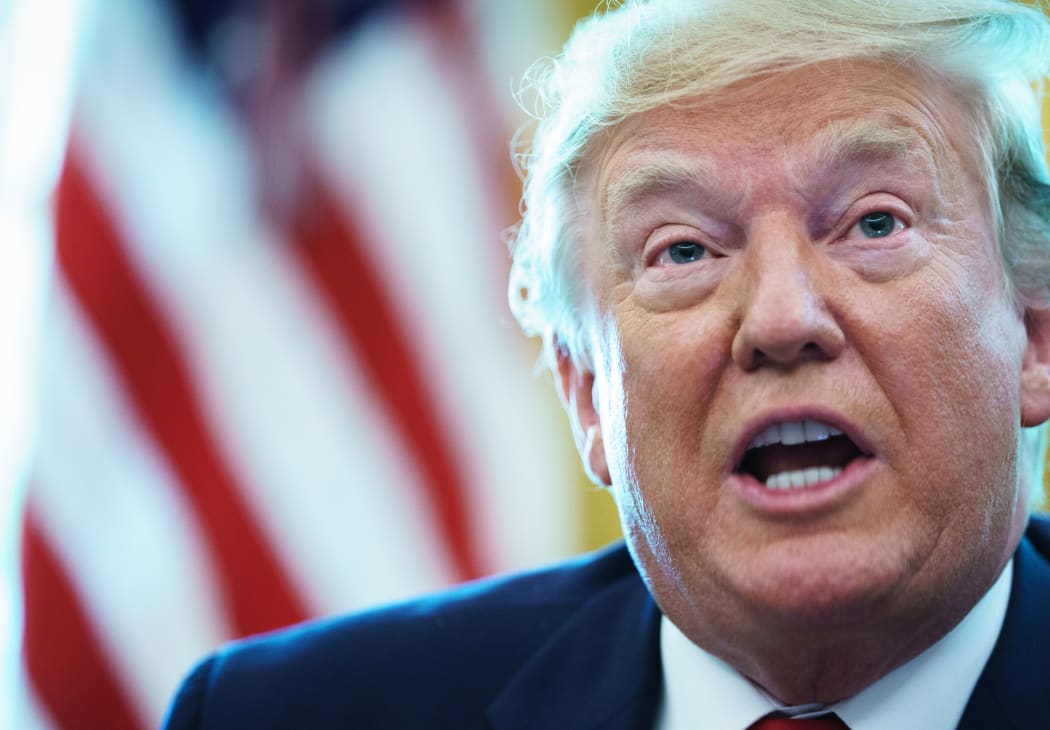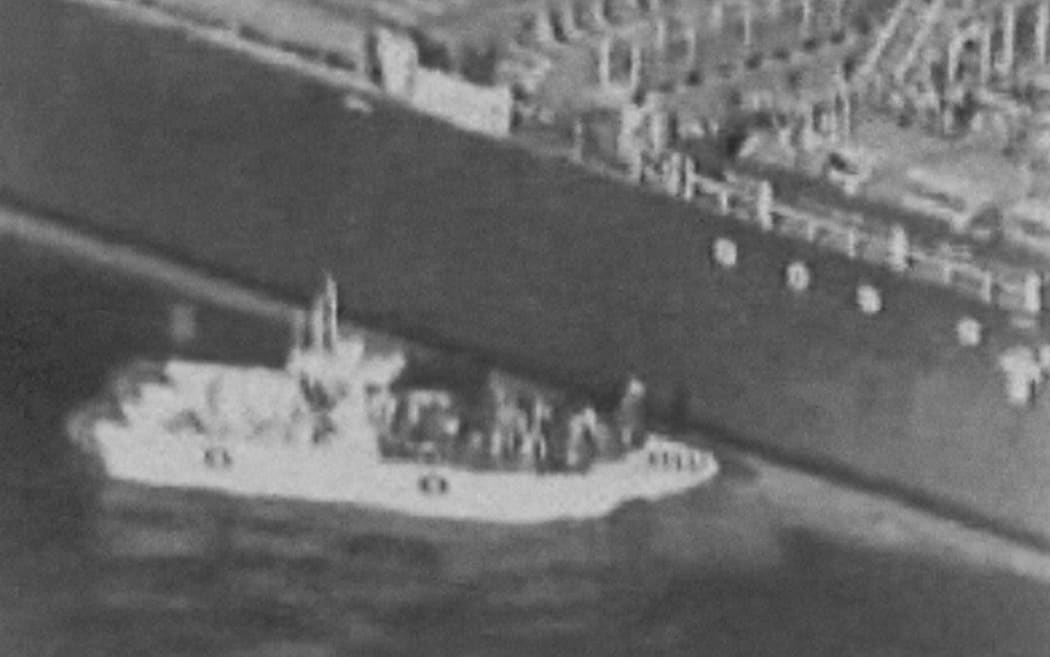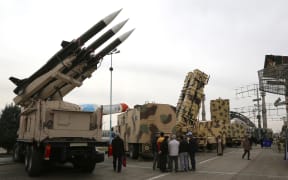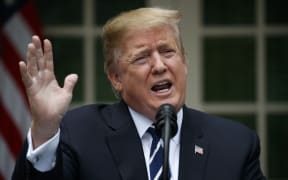US President Donald Trump has said he is imposing hard-hitting new sanctions on Iran, including on the office of the country's Supreme Leader Ali Khamenei.

Donald Trump said the new sanctions were in response to the shooting down of a US drone and "many other things". Photo: AFP
Mr Trump said the additional sanctions were in response to the shooting down of a US drone and "many other things".
Ayatollah Khamenei, Iran's highest authority, was singled out because he was "ultimately responsible for the hostile conduct of the regime".
Tensions between the two countries have been escalating in recent weeks.
However, US Treasury Secretary Steve Mnuchin said Mr Trump's executive order - which would lock up "billions" of dollars in Iranian assets - was in the works before Tehran shot down an unmanned US drone in the Gulf last week.
Iran's semi-official Tasnim and Fars news agencies said America had imposed new sanctions on Iran "based on fabricated excuses". Iranian officials have not yet responded.
Who is affected?
The US Treasury department said eight senior Iranian commanders who "sit atop a bureaucracy that supervises the IRGC's [the elite Iran's Revolutionary Guard Corps] malicious regional activities", were being targeted.
It added that Mr Trump's executive order would also "deny Iran's leadership access to financial resources and authorises the targeting of persons appointed to certain official or other positions by the Supreme Leader or the Supreme Leader's Office", as well as foreign financial institutions which help them conduct transitions.
The US has alleged Ayatollah Khamenei has vast wealth which helps funds the IRCG. In a 2018 op-ed, US Secretary of State Mike Pompeo suggested his personal wealth was as much as $US95 billion which was "used as a slush fund for the IRGC".
Sanctions will also be imposed on Iran's foreign minister later this week, according to Mr Mnuchin.
Why is the US imposing sanctions now?
In May 2018, the White House reinstated all sanctions removed under a 2015 nuclear deal made with world powers which sought to prevent Iran creating its own nuclear weapon.
Relations between the two nations continued to sour, and in May - a year after Mr Trump abandoned the nuclear deal - the US stepped up pressure on Iran by ending exemptions from secondary sanctions for countries still buying Iranian oil.
This was followed by a series of attacks on tankers in the Gulf, which the White House said Iran was behind. Tehran has denied all allegations.
Iranian officials then announced the country was set to breach the limit on its stockpile of enriched uranium that was set under the 2015 deal on 27 June.
Days later, the drone was shot down over what the US says was international waters, but Iran says was its territory.

A video released by US Central Command on 13 June reportedly showed an Iranian navy patrol boat removing an unexploded mine from the hull on one of the ships attacked in the Gulf of Oman. Iran insists it had no involvement with the attacks Photo: AFP / USCENTCOM
How have earlier US sanctions hit Iran?
The sanctions - particularly those imposed on the energy, shipping and financial sectors - caused foreign investment to dry up and hit oil exports.
They bar US companies from trading with Iran, but also with foreign firms or countries that are dealing with Iran.
This has led to shortages of imported goods and products that are made with raw materials from abroad, most notably babies' nappies.
The plunging value of the national currency, the rial, has also affected the cost of locally produced staples such as meat and eggs, which have soared in price.
Iran has responded to the economic pressure by saying it planned to violate some of the nuclear deal's commitments. It has also accused European countries of failing to live up to their promises of protecting Iran's economy from US sanctions.
What happened to the US drone?
Iran's IRGC said the drone's downing was a "clear message" to the US that Iran's borders were "our red line".
But US military officials maintain the drone was in international airspace over the Strait of Hormuz at the time.
Amir Ali Hajizadeh, a high-ranking officer in the IRGC, said another military aircraft, carrying 35 passengers, had been flying close to the drone. "We could have shot down that one too, but we did not," he said.
- BBC / Reuters



